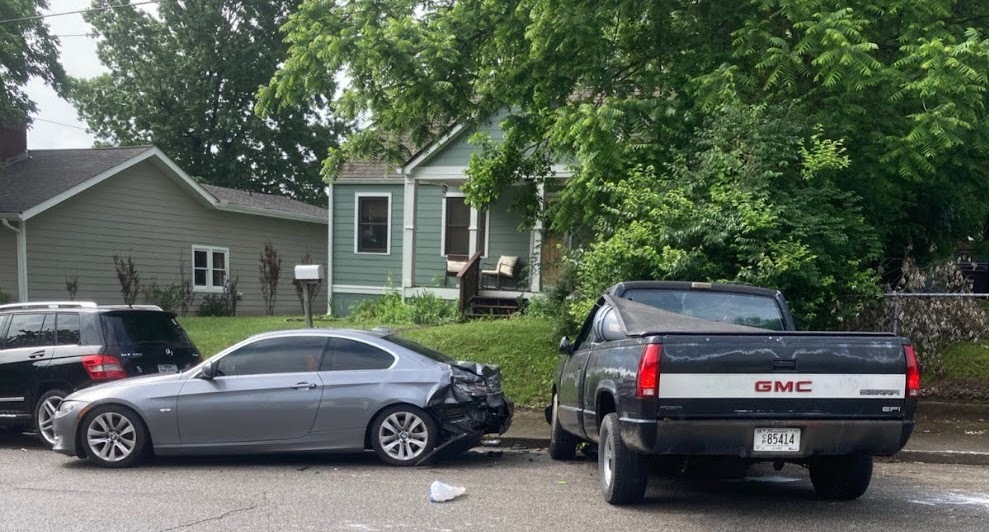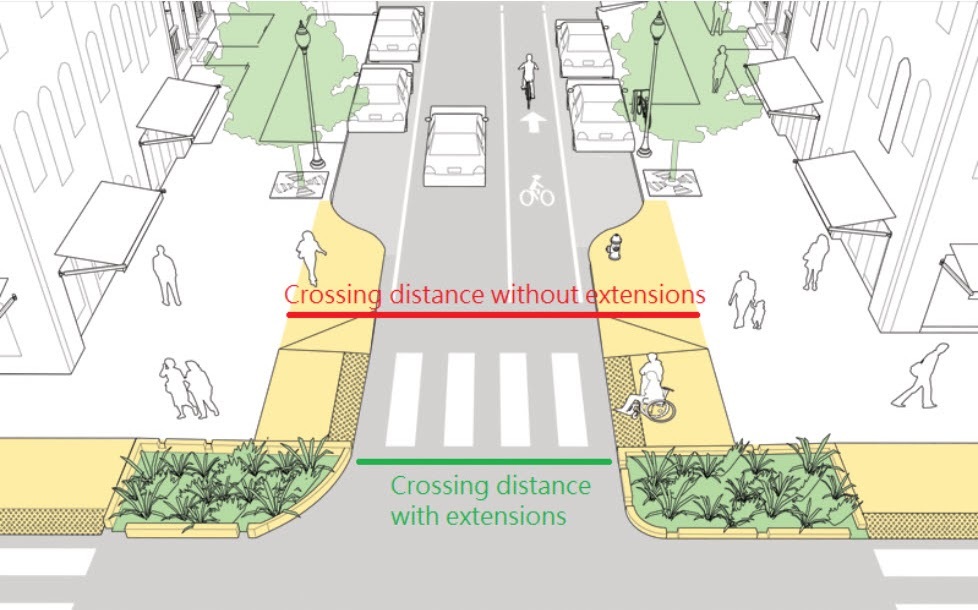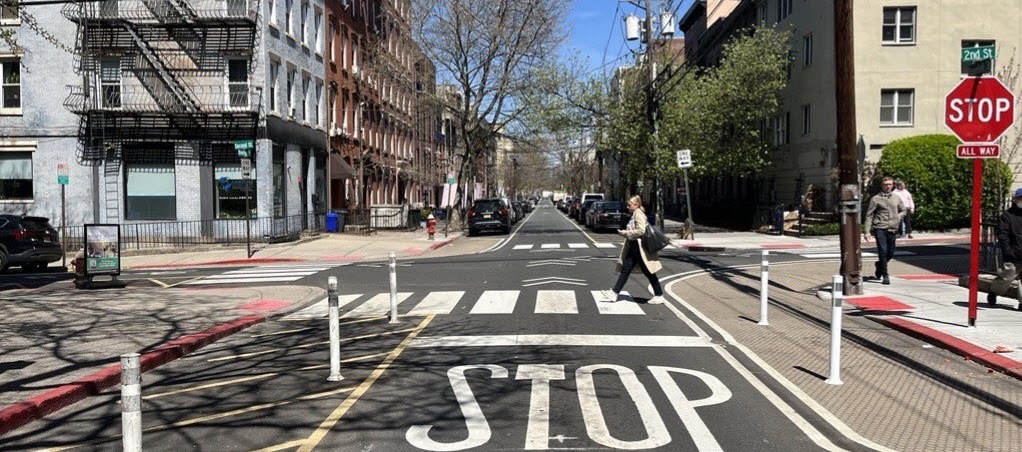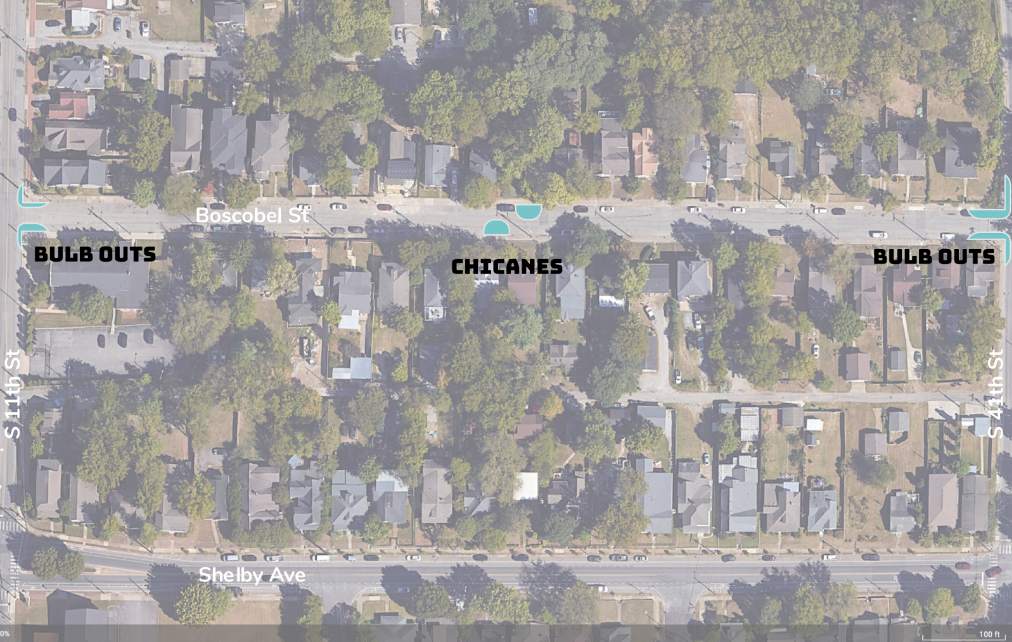
East End
Neighborhood Association
Tactical Urbanism Proposal for East End
by Leslie Hinson, on behalf of the East End Neighborhood Association
When you ask people in East End what they love about the neighborhood, almost all mention its walkability. Sidewalks on both sides of the street form a network that connects to parks, schools, grocery stores, coffeeshops, post office, medical and dental clinics, bars, restaurants, bookstores, giftshops, pet stores, concert venues, and even a hardware store. And that’s just within half a mile. If walkability wasn’t the reason someone moved to East End in the first place, it’s often the reason they want to stay.
On Mother’s Day morning, my boyfriend and I left our house on Boscobel Street in East End to walk to our neighborhood grocery store. We waved at our neighbors––a grandmother, mother, and child—loading into their car across the street, dressed for church or a Mother’s Day brunch.
Seconds later we heard an engine roaring as a truck came streaking down our residential street so fast that we both yelled at the driver to slow down. We remarked for what had to be the hundredth time that people are driving faster and faster down our block. Then we heard the crash. We whipped around and our hearts sank when we saw the truck stopped, crashed in the very spot we had just seen the three generations of women wearing smiles along with their Sunday best. Luckily, the driver had missed them by one car, crashing into an empty vehicle parked directly in front of the car with our neighbors inside. But the three ladies on their way to brunch, as well as the two of us, were incredibly shaken up.

For many of us on Boscobel, our reaction to this crash was a combination of both gratitude and anger. While this incident could have been tragically worse, it was also entirely and unforgivably predictable. It was a harsh reminder that the walkability that East Enders so enjoy is constantly under threat from fast, reckless driving that the current design of our streets not only allows, but invites. It’s past time we rescind that invitation.
Wider streets and lanes encourage people to drive faster.
Nashville Department of Transportation, Neighborhood Street Traffic Calming Toolkit
Like most streets in East End, Boscobel is wide enough for two travel lanes and curbside parking on both sides of the street. This leaves any part of the street where cars are not parked, including at intersections, too wide to signal to drivers to slow down and travel at speeds appropriate for neighborhood streets.

The Nashville Department of Transportation’s (NDOT) new tactical urbanism program offers quick, affordable, and community-driven solutions for addressing unsafe street design such as this. On streets like Boscobel, East End residents are pursuing strategies already identified in NDOT’s Neighborhood Street Traffic Calming Toolkit as ways to slow cars and make streets safer for pedestrians.
Wide streets often results in wider than necessary intersections. Bulb outs are an effective way to narrow these intersections to reduce the crossing distance for pedestrians and reduce the speed of turning vehicles.
Nashville Department of Transportation, Neighborhood Street Traffic Calming Toolkit
When installed at the entrance to a residential or low speed street, a curb extension is referred to as a ‘gateway’ treatment and is intended to mark the transition to a slower speed street.
National Association of City Transportation Officials (NACTO)
One option from NDOT’s tactical urbanism guide is the bulb out. Bulb outs, or curb extensions, serve a number of purposes in walkable neighborhoods like East End. First, they provide physical protection for pedestrians, shortening crossings to minimize the time and distance that walkers and wheelchair users are exposed to vehicle conflicts.

Where an absence of curb-parked vehicles leaves an intersection wide and unprotected, bulb outs slow the speed of turning vehicles by tightening the turn radius. They then help reduce speeds down the street by signaling to drivers that they are entering a low-speed area.
At other intersections, where parking encroachment is the problem (like Russell and 11th St pictured below), these same curb extensions help preserve sightlines for drivers to see both pedestrians as well as cross traffic, reducing the potential for collisions with either humans or other cars and eliminating the urge to accelerate quickly into what might be small gaps in traffic. Increased visibility for all street users is why protecting corners from parking encroachment is sometimes called “daylighting” (below, right).

The city of Hoboken, New Jersey, famously eliminated traffic fatalities completely over the past several years primarily through daylighting intersections. Importantly, daylighting intersections doesn’t just result in fewer collisions, it also makes pedestrians and cyclists feel safer on the streets, reducing stress and inviting more active uses of the street for recreation or replacing car trips with errands on foot or two wheels.
With NDOT’s support, East End would like to daylight every intersection in the neighborhood, extending the curbs at every crosswalk where curbside parking is currently permitted using a combination of paint, flexpost delineators, and landscaping planters.

Chicanes create a meandering roadway by introducing slight curves that force drivers to pay more attention, while also narrowing lanes and the street.
Nashville Department of Transportation, Neighborhood Street Traffic Calming Toolkit
Another solution for Boscobel specifically could be pinch points (chicanes) strategically placed along the street to force traffic toward the center line and around a pair of curves, to encourage slower driving.

Finally, East End would also like to promote NDOT’s parklet program as an option for residents on Boscobel to repurpose curbspace in front of their homes for more active, inviting, pro-social uses such as seating areas, lawn games, even community gardens. These spaces will not only enhance the eclectic and creative character of our neighborhood but also add passive traffic calming by visually narrowing the street and signaling to through-traffic that Boscobel Street is for people, where cars are guests.